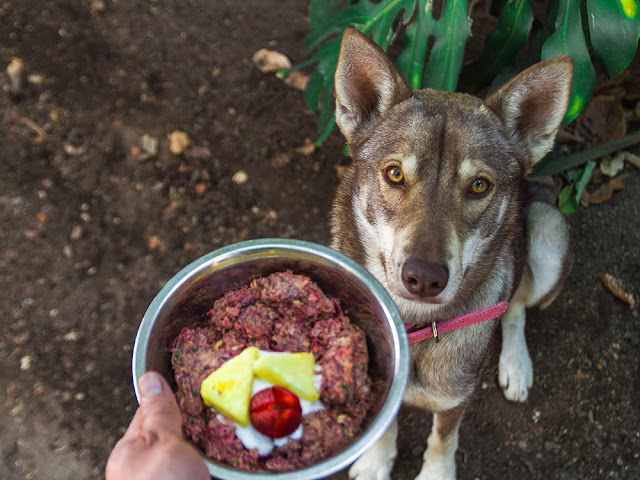switch dog food for allergy how long does it last
Homemade dog food recipes
One way to address dog food allergies is by switching to homemade dog food. By preparing your dog’s meals yourself, you have full control over the ingredients and can eliminate any potential allergens. Here are a few homemade dog food recipes that are suitable for dogs with allergies:
1. Turkey and sweet potato recipe:
– Ingredients:
- 1 pound ground turkey
- 1 cup cooked and mashed sweet potatoes
- 1/2 cup cooked peas
- 1/4 cup shredded carrots
- 1/4 cup chopped parsley
– Instructions:
In a large skillet, cook the ground turkey until browned. Drain any excess fat. In a separate pot, cook the sweet potatoes until tender. Mash them and set aside. In a bowl, mix together the cooked turkey, mashed sweet potatoes, peas, carrots, and parsley. Serve in portioned meals for your dog.
2. Salmon and quinoa recipe:
– Ingredients:
- 1 pound cooked salmon, flaked
- 1 cup cooked quinoa
- 1/2 cup cooked green beans
- 1/4 cup grated zucchini
- 1/4 cup chopped dill
– Instructions:
In a bowl, mix together the cooked salmon, quinoa, green beans, grated zucchini, and chopped dill. Serve in portioned meals for your dog.
Hypoallergenic dog food
If you prefer to purchase commercial dog food, look for hypoallergenic options. These are specifically formulated to minimize the risk of triggering allergies in dogs. Hypoallergenic dog food typically contains a limited number of ingredients and avoids common allergens such as wheat, soy, and dairy. Additionally, some hypoallergenic dog food brands use alternative protein sources like venison or duck, which can be less likely to cause allergic reactions in dogs.
When selecting hypoallergenic dog food, it’s important to consult with your veterinarian to ensure that the chosen brand meets your dog’s nutritional needs. Your vet may also recommend specific hypoallergenic dog food brands that have proven successful in managing food allergies in dogs.
Limited ingredient dog food
Another option for dogs with food allergies is limited ingredient dog food. These formulas are designed to have a minimal number of ingredients, making it easier to identify and avoid potential allergens. Limited ingredient dog food often features a single source of protein and a single source of carbohydrates.
This type of dog food can help pinpoint specific ingredients that your dog may be allergic to. By gradually introducing different limited ingredient dog food options, you can determine which ingredients trigger allergic reactions in your dog.
Dog food allergies
Dog food allergies occur when a dog’s immune system reacts adversely to certain ingredients in their food. Some of the common food allergens for dogs include:
- Wheat
- Soy
- Corn
- Dairy
Symptoms of dog food allergies can manifest as itching, skin rashes, gastrointestinal upset, and even ear infections. In severe cases, food allergies may cause anaphylactic reactions, which can be life-threatening.
If you suspect that your dog has a food allergy, it is important to consult with your veterinarian. They can help you determine the specific allergen and recommend an appropriate diet or allergy testing.
Allergy relief for dogs
To provide relief for dogs with food allergies, it is crucial to identify and eliminate the allergen from their diet. Switching to a hypoallergenic or limited ingredient dog food can significantly reduce allergic reactions. Additionally, there are other steps you can take to alleviate allergy symptoms in dogs:
- Regularly bathing your dog using a hypoallergenic shampoo
- Using allergen-resistant bedding for your dog
- Keeping your house clean to minimize exposure to allergens
- Administering antihistamines or other prescribed medications, as advised by your veterinarian
It is essential to consult with your veterinarian before giving any medication to your dog, as some human medications can be toxic to dogs.
Allergy testing for dogs
If your dog’s allergies persist despite dietary changes, your veterinarian may recommend allergy testing. Allergy testing can help identify specific allergens that are causing your dog’s symptoms. There are two main types of allergy testing for dogs:
1. Blood testing: This involves drawing a blood sample from your dog and sending it to a specialized laboratory. The lab will test the sample for antibodies and determine which allergens trigger an immune response in your dog.
2. Intradermal skin testing: During this procedure, small amounts of various allergens are injected into your dog’s skin. The veterinarian will observe any allergic reactions, such as redness or swelling, to identify the specific allergens affecting your dog.
Based on the results of allergy testing, your veterinarian can develop a customized treatment plan for your dog, which may include dietary changes, medication, or immunotherapy.
Grain-free dog food
Grain-free dog food has gained popularity in recent years, with many pet owners opting for this type of diet. Grain-free dog food does not contain any grains such as wheat, corn, or soy. While it is often marketed as a solution for food allergies, it is important to note that not all dogs with allergies are intolerant to grains.
If you suspect that your dog’s food allergies are triggered by grains, consult with your veterinarian before switching to a grain-free diet. Your veterinarian can help determine if grains are the source of the allergic reaction and guide you in selecting the most appropriate diet for your dog’s needs.
Signs of food allergies
Recognizing the signs of food allergies in dogs is essential for prompt diagnosis and treatment. Some common signs of food allergies in dogs include:
- Itching and scratching, especially around the face, paws, and ears
- Red and inflamed skin
- Hives or rashes
- Ear infections
- Digestive issues such as diarrhea, vomiting, or excessive gas
- Chronic ear infections
If you notice any of these symptoms in your dog, it is crucial to consult with your veterinarian for an accurate diagnosis and appropriate treatment plan.
Switching dog food for allergy – how long does it last?
When you switch your dog’s food to address allergies, it may take some time before you see noticeable improvements in their symptoms. The time it takes for the new diet to take effect can vary depending on several factors:
- The severity of your dog’s food allergies
- The specific allergens triggering the allergies
- Your dog’s individual response to the new diet
- Consistency in feeding the new diet
In general, it is recommended to feed the new diet for at least 8 to 12 weeks before assessing its effectiveness. This allows sufficient time for your dog’s system to adapt to the new food and for any previous allergens to be fully eliminated from their system. It is essential to follow your veterinarian’s guidance regarding the duration of the dietary trial.
During the trial period, closely monitor your dog for any changes in their symptoms. Keep track of any improvements or worsening of symptoms and report them to your veterinarian. Based on the observations, your veterinarian can make further recommendations or adjustments to the diet.
Remember, every dog is unique, and what works for one may not work for another. Finding the right diet to manage your dog’s food allergies may require some trial and error, but with patience and guidance from your veterinarian, you can help your furry friend live a comfortable and symptom-free life.













